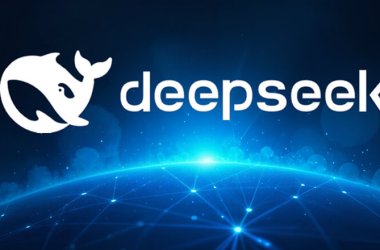
This time last year, the word Blockchain was sparking a frenzy amongst senior IT leaders in the GCC. In this very publication, many GCC CIOs predicted that 2018 would be the year of Blockchain. Now, as the year is drawing to a close, the mass adoption of the technology has failed to take off for a few reasons.
For the likes of AI and Blockchain, realism is often not there because the path hasn’t been trodden. The media is definitely guilty of hyping certain technologies, and although it’s great to talk about what the future holds, we need to be realistic about the present. There needs to be a voice of sanity sometimes – it’s great to have ideas and believe that things are possible, but it’s important to be realistic. You can only make something with the cards you are dealt.
If you want to build a traditional application, the chances are you have internal expertise to do so already, or you can twirl your rolodex and call upon any number of development houses – but when it comes to Blockchain, who do you call? Unfortunately, a lot of people profess to be Blockchain developers. They claim they can help you with Blockchain projects, but that is often absolutely not the case.
These days, everyone who does any kind of software development thinks they can do Blockchain. In a lot of cases that just waters down the quality of the output. Some companies haven’t got a clue, to be completely frank. They offer you products and services, then once they’ve sold them to you, only then do they try and figure out how to actually deliver them. Until there are developers with 3-5 years of experience, I don’t think we’ll really see Blockchain fully come to fruition, in spite of what anyone says.
There are very few reliable players in the market right now, and as a result those select few that you can work with will come at a cost. Roughly speaking, you’ll end up paying 5-10 times more to build a Blockchain-based application than you would a traditional one that performs the same function. If you have a large experimental budget like Maersk you can call upon the likes of IBM, but this option is not available to all IT leaders. This problem is exacerbated by the scarcity of seasoned and skilled professionals – and those that are out there also command a premium for their services.
So far, the only successful non-cryptocurrency Blockchain implementations (or POCs) revolve around the ability for an entity or organisation to control an entire set of processes. I believe September’s cryptocurrency price collapse was actually a good thing in many respects. There was so much hype around get-rich quick schemes, with people believing the $1,000 of Bitcoins they’d bought would turn into $100,000. Just under a year ago, people were buzzing over the price of Ripple and Ethereum, but now nobody talks about them. People are now focused on the technology behind them – Blockchain.
A handful of success stories are there: us at Tristar, flydubai’s baggage tracing Blockchain, the Dubai Government and of course Maersk. As the whole point of Blockchain is to enable trust between multiple parties that would otherwise not trust each other, this is somewhat paradoxical.
An issue that some of the early movers in the commercial space have encountered is onboarding other parties to their Blockchains. There are several reasons for this, but primarily they revolve around companies not wanting to expose their confidential data (even though it is encrypted and inaccessible to those not authorised to see it) on nodes that sit outside of their control or data centre and they don’t want to share the significant cost involved with onboarding, despite the obvious benefits to irrefutable data.
That said, the beauty of technology like Hyperledger is that independently developed Blockchains can be plugged together and thus allow interoperability between multiple Blockchains – overcoming the first hurdle of exposure of confidential data – you can just expose only what is required to move the transaction or set of processes along. Having had 18 months of experience with the technology, I envisage that this is way things will end up a few years down the line.
When technology is new, it is expensive. Remember how much it cost to buy a DVD player all those years ago? Eventually, as Blockchain developer expertise increases, the cost and the ability to build Blockchains will no longer be priced out of reach of the mid-tier and more widespread adoption will begin to take hold. We will see organisations then sharing data between each other with their own private Blockchains – thus removing the two greatest stumbling blocks to mass adoption.
I am often asked the question “why do we need Blockchain when we can store data in traditional databases?” In some ways, that’s a valid question. People need to understand that while you can’t tamper with data on a Blockchain, data coming into its related databases can be manipulated. That is the major current flaw with Blockchain.
Nonetheless, my response to the question is always a variation of the same theme – “why do you use email when you can write a message using a quill and an inkpot and send it via horseback messenger?” A new way of doing things is always going to provoke debate and questions – and that is a good thing. Always.





